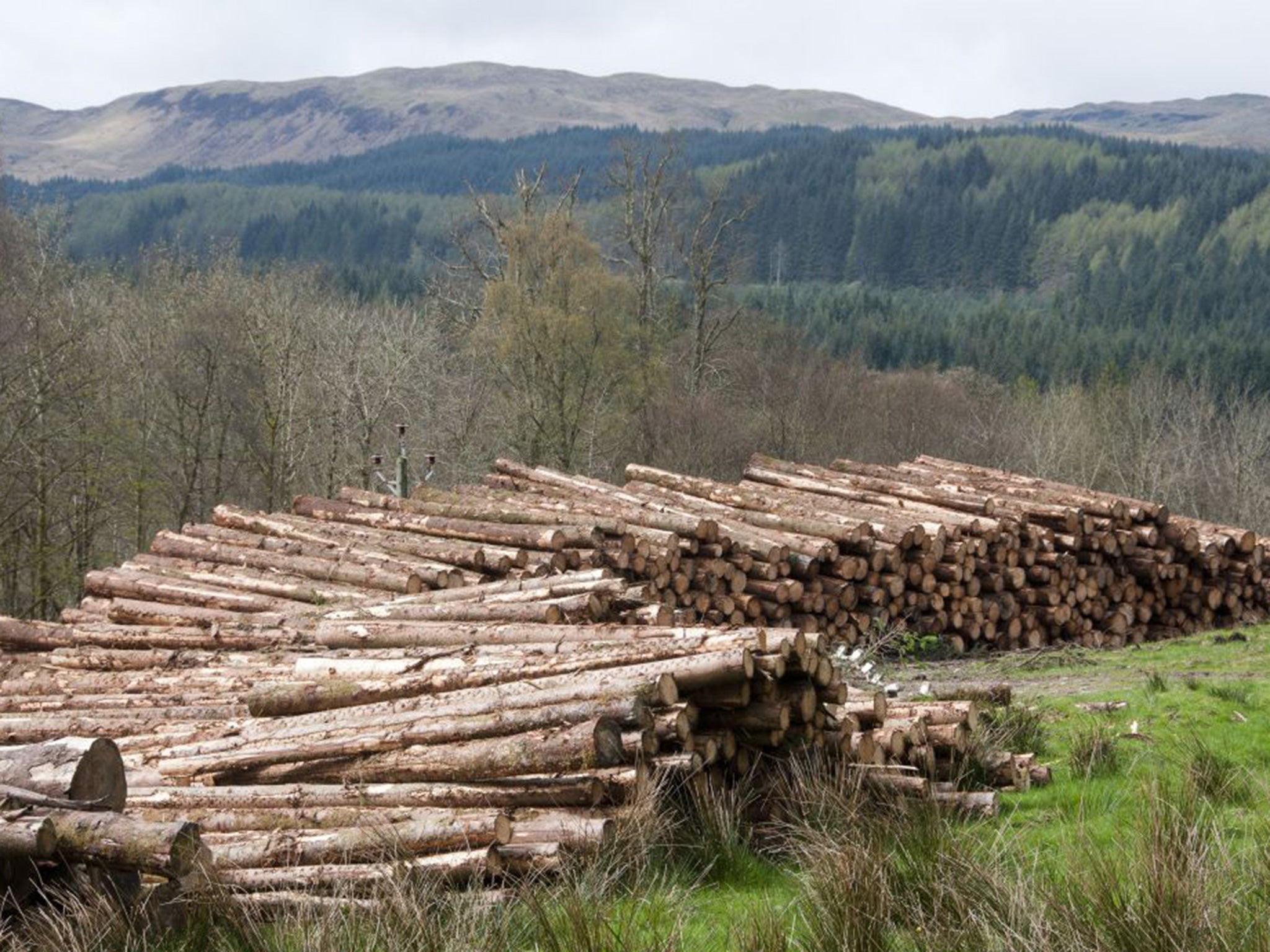Timber production soars as industry reaps benefits of 1960s tree-planting boom
The British timber industry is now worth £1.9bn a year and employs 40,000 people

Timber! That cry is being heard a lot more around Britain these days, as the wood processing industry is experiencing a huge growth in production, largely thanks to trees planted decades ago that are finally reaching maturity.
The UK is reaping the rewards of a frenetic period of conifer sowing in the 1960s, producing a record 12 million tonnes of timber in 2014, according to new figures from the Forestry Commission.
Last year’s production was a third higher than in 2008, helped by rising investment and increased promotion by the Government. “A lot of conifer forests were planted in the 1960s and 70s and they’re now coming to maturity” said Stuart Goodall, head of the private forestry and wood processing industry body ConFor. “They take about 40 years to grow and this is the optimum time to be harvesting those trees.”
The increase in supply has been accompanied by rising demand. “There’s been a huge amount of investment in saw-milling, which has increased their production capacity but also created wood products that are easier to handle and look better and that’s encouraging people who are buying wood to buy British,” added Mr Goodall.
The timber in question is overwhelmingly the soft wood of conifer trees, which account for 96 per cent of Britain’s production – although they comprise only about a quarter of the country’s woodland overall.
Conifers, which are suited to Britain’s mild, rainy climate, are mostly grown in the North of England, southern Scotland, western England and Wales.The biggest chunk of the wood produced in the UK is used in housebuilding, followed by fencing for homes and farms, and decking for gardens. It also finds its way into everyday goods such as newspapers and sandwich packaging.
The British timber industry is now worth £1.9bn a year and employs 40,000 people. Most of the woodland is managed by family firms, with James Jones & Sons and BSW Timber Group among the biggest. Furthermore, the trend of rising production is set to continue for the next 15 to 20 years.
But at some point in the 2030s, production will trail off dramatically as tree-planting fell off a cliff in the 1990s, said Mr Goodall – creating a shortfall in supply that is even more pronounced when you consider that at the current record level, the UK still imports 80 per cent of the wood it uses. This makes it the third biggest net importer of timber in the world, behind only China and Japan.
12m tonnes
The amount of timber produced in the UK in 2014, according to Forestry Commission figures
Tree-planting peaked at around 66 million a year during the 1960s, following a post-war drive to replenish stocks lost to the war effort and aided by tax breaks. It was still up at 55 million in the 1980s but tumbled to around 8 million in the 1990s and has stayed at about that level ever since, said Mr Goodall. Furthermore, while almost all the trees planted in the heady days were conifers intended for harvesting, a sizeable percentage these days are “broadleaf” trees planted for environmental reasons, he said.
Five places to sleep in the trees
Show all 5The steep decline in tree-planting dates back to the Flow Country scandal. This saw a rolling expanse of peatland in Caithness and Sutherland ruined between 1979 and 1987 as numerous non-native conifers were planted, drying out the area. That planting was driven by a forestry tax relief which Lord Lawson, the then chancellor, scrapped in 1988.
But while the Flow Country was an unsuitable place to grow trees, many other parts of the UK are ideal, said Mr Goodall. “We’re been lobbying very hard for the governments of the UK in Westminster, Scotland and Wales to plant more trees so that we can help offset the falling away of supply,” he said. “This is so significant that it’s likely to threaten the existence of some of the saw-milling businesses in the sector and will lead to more imports.”
The Department for Environment, Food and Rural Affairs (Defra) said 10,000 hectares of new woodland were created in 2014-15 and that £31m of new Rural Development Programme funding will be spent on forestry a year – £13m on woodland management and £18m on new planting. The Government is also backing the Grown in Britain campaign to promote British timber and sustainable growing methods.
Beatrix Richards, of WWF-UK, said: “More domestic production has to be a good thing, but as a country our forest cover is still way too low.”
Subscribe to Independent Premium to bookmark this article
Want to bookmark your favourite articles and stories to read or reference later? Start your Independent Premium subscription today.

Join our commenting forum
Join thought-provoking conversations, follow other Independent readers and see their replies